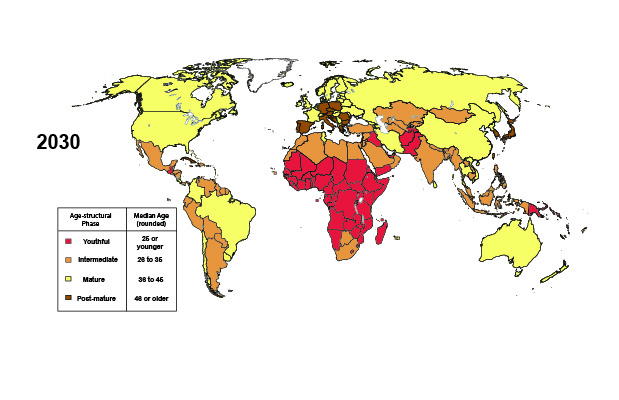
Welcome to politicaldemography.org
What Future for the Western Sahel?
The Region’s Demography and Its Implications by 2045 (Atlantic Council, 2021)
By Richard Cincotta and Stephen Smith
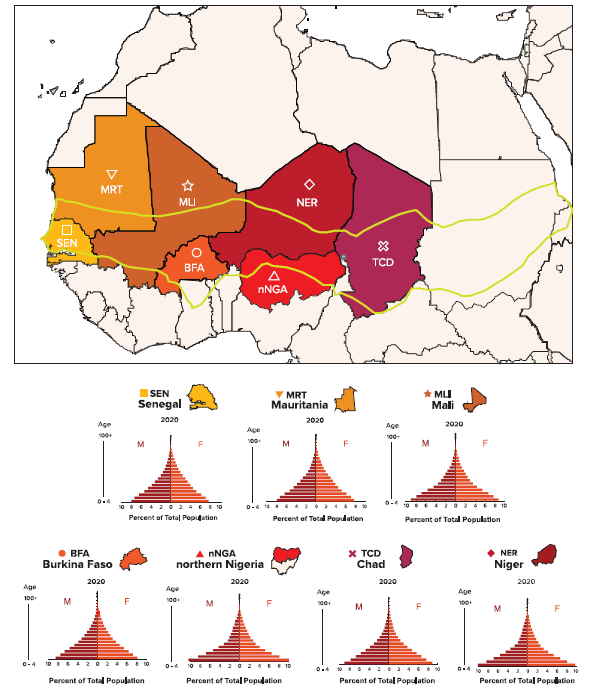

The Western Sahel—a region stretching from Senegal and Mauritania to Mali, Burkina Faso, Niger, and Chad, and including the twelve sharia law states of northern Nigeria—is in a demographic impasse. Rather than yielding an economic dividend, the conditions spawned by the region’s persistently youthful, rapidly growing, high-fertility populations overwhelm the capabilities of state-run services, generate extensive urban slum conditions, slow if not stall economic and social progress, and aggravate ethnic tensions. Decades of exposure to these mutually reinforcing conditions have undermined the legitimacy of central governments and rendered the region’s states vulnerable to the spread of Islamic populism and regime instability. For more …..
To view the report online: go here.
To view the Executive Summary, go to the Atlantic Council website
To download the report in .pdf format: download here
Attachments
Predicting the Rise and Demise of Liberal Democracy: How well did we do?
by Richard Cincotta

In 2007, at the (U.S.) National Intelligence Council, a colleague and I set out to determine if we could forecast two distinct political phenomena, the rise and the demise of high levels of democracy. To guide our decade-long forecasts, we relied on a simple statistical model and a spreadsheet of demographic projections from the UN’s 2006 World Population Prospects data set. Now that the experimental period (from 2010 to 2020) has ended, we can look back and ask: How well did these forecasts perform?
Overall, surprisingly well; but by no means, flawlessly. In fact, we expected too much political liberalization during a decade when democracy was largely in retreat. Yet, had our age-structural forecasts been taken more seriously when first presented and published (see “Half a Chance”, published by the Wilson Center’s Environmental Change and Security Program), foreign affairs analysts might have been amply forewarned of two of the decade’s most unanticipated political events: Tunisia’s rise to liberal democracy (Free in Freedom House’s annual assessments); and the demise of four of West Africa’s liberal democracies (decline from Free to Partly Free or Not Free).
To continue reading, go to: New Security Beat, Predicting the Rise and Demise of Liberal Democracy: How well did we do?
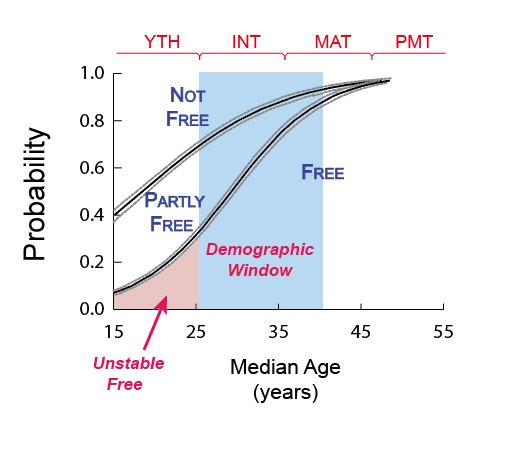
Attachments
Education, Urbanization, and the U.S. Presidential Election
Go to article here …

Rather than delve into issue opinion polling, or assess presidential campaign strategies, political demographers assume that political change is the predictable product of a set of mutually reinforcing social, economic, and demographic transitions, which can be tracked using data. But is this true in a country like the United States that has been in the advanced stages of these development transitions for decades? If these transitions are as important as demographers believe, could their variation among the 50 states explain the outcome of the recent U.S. presidential election? If so, what could they tell us about America’s electoral future?
My attempt to answer these questions begins with a brief discussion of the CNN exit polling during the 2016 presidential election and ends with an analysis of the 2020 state results. Given what has already been said about the Democratic Party’s appeal among college-educated Americans and the Republican Party’s appeal among rural Americans, the basic conclusions are not surprising. What I find surprising is the ability of these individual party strengths, almost by themselves, to divide America’s states into a hard-to-change red and blue pattern. ….. (continue)
Read more at the Wilson Center’s New Security Beat or download article here.
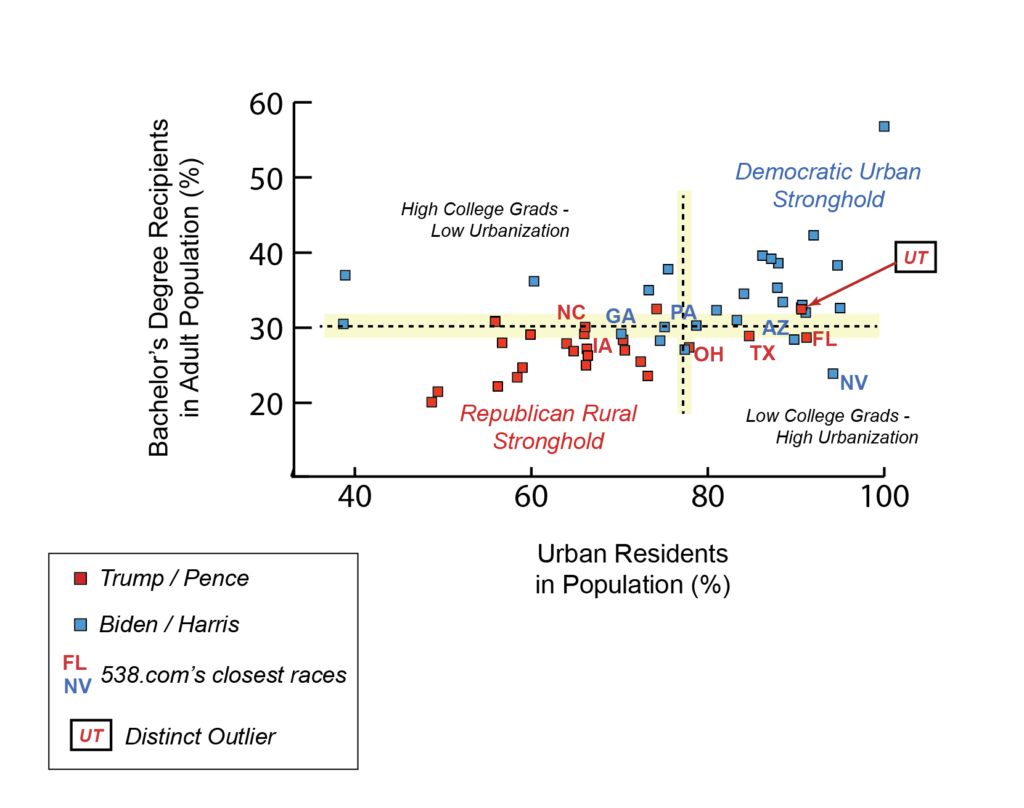
Figure. U.S. Presidential election results, Nov. 2020, showing each state’s proportion of college graduates (vertical axis) and proportion of urban residents (horizontal axis).
Attachments
The Hidden Factor in COVID-19 Mortality

“Population Age Structure: The Hidden Factor in COVID-19 Mortality”
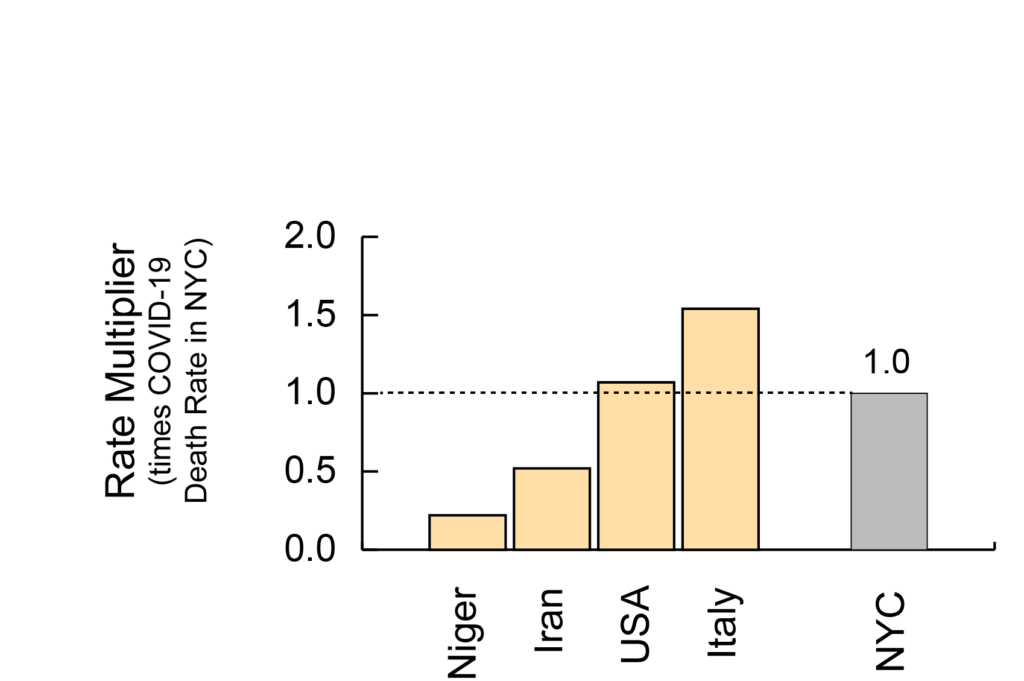
Figure. Relative age-structural vulnerability to COVID-19 mortality
Applying New York City’s (NYC’s) COVID-19-related age-specific mortality rates to a country’s population age structure produces an estimate of the expected countrywide mortality, relative to NYC at a similar level of prevalence.
Until several months ago, demographers regarded a youthful age structure as an unequivocally detrimental demographic characteristic. Where more than half of the population is younger than age 25, countries are unable to attain high levels of economic and human capital development and face an increased risk of some forms of civil conflict. Yet, so far, during the ongoing pre-vaccine stage of the COVID-19 pandemic, the most age-structurally mature countries have been hardest hit by the disease. These countries are generally urbanized, wealthy, well-educated, and include a large proportion of seniors. And, somewhat surprisingly—despite being equipped with advanced medical technologies—these countries are experiencing the highest rates of mortality from complications related to COVID-19. See more …
To view the rest of this brief article, go to its New Security Beat site, or download the essay here.
Attachments
Emulating Botswana’s Fertility Transition

“Emulating Botswana’s Approach to Reproductive Health Services Could Speed Development in the Sahel”
This new web essay (on the NSB website <click here>) reviews research that uses the relatively rapid changes in Botswana’s age-specific fertility rates to produce a “Botswana historic fertility variant” and applies this projection to the populations of countries in the Western Sahel—a contiguous cluster of states with populations that remain at the early stages of the fertility transition. For these high-fertility countries, projections of this variant (up to the year 2050) fall roughly around the TFR trajectory the UN low fertility variant.
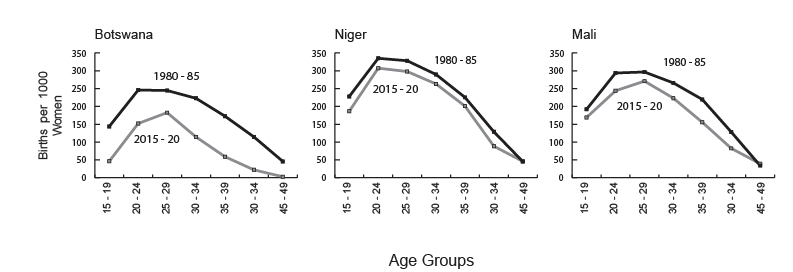
Figure. Declines in Fertility Across Women’s Age Groups in Botswana, Niger, and Mali from 1980–85 to 2015–20. In Botswana, girls’ education and a quality family planning program helped adolescents postpone childbearing and helped older women avoid the risks associated with unwanted middle-age pregnancy (Data source: UN Pop. Div., 2019 Rev.)
This exercise provides a glimpse of what could possibly be achieved in some states in tropical Africa by emulating Botswana’s efforts to ramp up access to family planning, to decrease the frequency of teen pregnancies, and to increase girls’ educational attainment. However, the essay notes how different the Sahelian countries are from Botswana—a well-governed, resource-endowed southern African country with a relatively small, urbanized (>65%) population (2.3 million)—and thus the formidable challenges those differences present in attempting to replicate the pace of Botswana’s fertility transition.
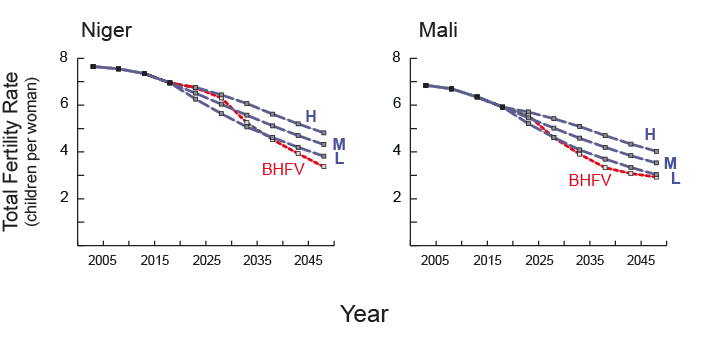
Figure. UN Population Division’s High, Medium, and Low Fertility Variants for Niger and Mali vs. Botswana Historical Fertility Variant (BHFV). In both cases, applying Botswana’s age-specific pattern of fertility declines would produce a projection roughly similar to the current UN low fertility variant. (Data Source: UN Pop. Div., 2019 Rev. & author’s research)
For the full essay, go to the NSB website <click here>
Or, download the essay <click here to download>


